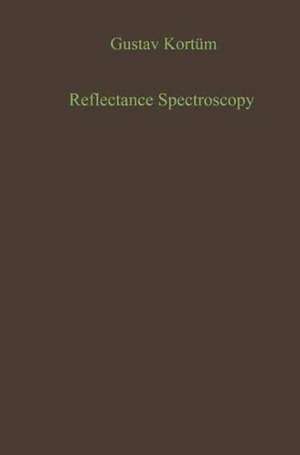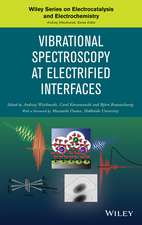Reflectance Spectroscopy: Principles, Methods, Applications
Autor Gustav Kortüm Traducere de James E. Lohren Limba Engleză Paperback – 11 apr 2012
Preț: 644.30 lei
Preț vechi: 758.01 lei
-15% Nou
Puncte Express: 966
Preț estimativ în valută:
123.29€ • 131.84$ • 102.79£
123.29€ • 131.84$ • 102.79£
Carte tipărită la comandă
Livrare economică 18 aprilie-02 mai
Preluare comenzi: 021 569.72.76
Specificații
ISBN-13: 9783642880735
ISBN-10: 3642880738
Pagini: 376
Ilustrații: VI, 366 p.
Dimensiuni: 155 x 235 x 20 mm
Greutate: 0.53 kg
Ediția:Softcover reprint of the original 1st ed. 1969
Editura: Springer Berlin, Heidelberg
Colecția Springer
Locul publicării:Berlin, Heidelberg, Germany
ISBN-10: 3642880738
Pagini: 376
Ilustrații: VI, 366 p.
Dimensiuni: 155 x 235 x 20 mm
Greutate: 0.53 kg
Ediția:Softcover reprint of the original 1st ed. 1969
Editura: Springer Berlin, Heidelberg
Colecția Springer
Locul publicării:Berlin, Heidelberg, Germany
Public țintă
ResearchCuprins
I. Introduction.- II. Regular and Diffuse Reflection.- a) Regular Reflection at Non-Absorbing Media.- b) Total Reflection.- c) Regular Reflectance at Strongly Absorbing Media.- d) Definition and Laws of Diffuse Reflection.- e) Experimental Investigation of Diffuse Reflection at Non-Absorbing Materials.- f) Diffuse Reflectance at Absorbing Materials.- g) Dependence of Remission Curves on Particle Size.- III. Single and Multiple Scattering.- a) Rayleigh Scattering.- b) Theory of Scattering at Large Isotropic Spherical Particles.- c) Multiple Scattering.- d) The Radiation-Transfer Equation.- IV. Phenomenological Theories of Absorption and Scattering of Tightly Packed Particles.- a) The Schuster Equation for Isotropic Scattering.- b) The Kubelka-Munk Exponential Solution.- c) The Hyperbolic Solution Obtained by Kubelka and Munk.- d) Use of Directed Instead of Diffuse Irradiation.- e) Consideration of Regular Reflection at Phase Boundaries.- f) Absolute and Relative Measurements.- g) Consideration of Self-Emission or Luminescence.- h) Attempts at a Rigorous Solution of the Radiation-Transfer Equation.- i) Discontinuum Theories.- V. Experimental Testing of the “Kubelka-Munk” Theory.- a) Optical Geometry of the Measuring Arrangement.- b) The Dilution Method.- c) Concentration Dependence of the “Kubelka-Munk” Function F(R?).- d) The Typical Color Curve.- e) Influence of Cover Glasses.- f) Scattering Coefficients and Absorption Coefficients.- g) Influence of Scattering Coefficients on the “Typical Color” Curve”.- h) Particle-Size Dependence of the Kubelka-Munk Function.- VI. Experimental Techniques.- a) Test of the Lambert’s Cosine Law.- b) The Integrating Sphere.- c) Measuring Apparatus.- d) Measurements with Linearly Polarized Radiation.- e) The Measurementof Fluorescent Samples.- f) Influence of Moisture on Reflectance Spectra.- g) Preparation of Samples for Measurement.- h) Adsorption from the Gas Phase and from Solution.- i) Measurements in the Infrared.- k) Discussion of Errors.- VII. Applications.- a) The Spectra of Slightly Soluble Substances, or Substances that are Altered by Dissolution.- b) Spectra of Adsorbed Substances.- c) Kinetic Measurements.- d) Spectra of Crystalline Powders.- e) Dynamic Reflectance Spectroscopy.- f) Analytical Photometric Measurements.- g) Color Measurement and Color Matching.- VIII. Reflectance Spectra Obtained by Attenuated Total Reflection.- a) Determination of the Optical Constants n and ?.- b) Internal Reflection Spectroscopy.- c) Methods.- d) Applications.- Appendix: Tables of the Kubelka-Munk-Function.









